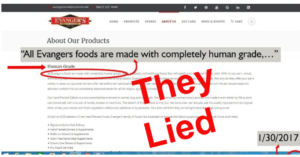Pet food: a roundup of recent stories
I maintain an active interest in pet food, even though my books on the topic came out a few years ago
- Pet Food Politics: The Chihuahua in the Coal Mine (2008): a contemporary history of the 2007 recalls resulting from pets dying from melamine poisoning.
- Feed Your Pet Right (2010): an analysis of the pet food industry co-authored with Mal Nesheim.
Here are some recent items:
- Pet food is big business ($63 billion last year). It brings people into supermarkets and boosts sales. [OK. You already knew this, no?]
- Evangers, a pet food maker occasionally in trouble over ingredient and food safety problems has been caught with horse meat in its products. It says it doesn’t use horse meat, even though it has a license to use it. It blames its beef supplier.Private label pet food brands are selling well. They are cheaper. For the record: all complete-and-balanced pet foods are required to meet the same nutritional standards and to support dog and cat reproduction, growth, and development (they are like infant formula in that regard).
- Food safety issues for humans also mean food safety issues for pets. The CDC is warning people not to consume certain turkey products because of illnesses caused by Salmonella. “Evidence collected by federal officials investigating the illnesses has revealed the outbreak strain in samples from live turkeys and many kinds of raw turkey products, including pet food.”
- Raw pet food continues to raise food safety risks: Rad Cat Raw Diet has been recalled due to Listeria contamination. A case of human Salmonella illness has been linked to a Darwin’s raw pet food.
- And the FDA announces the recall of Nutrisca dry dog food with levels of vitamin D so excessive that they made dogs sick.
- Mars Veterinary, the biggest manufacturer of pet foods, is working on some new products made from—get this—lab-grown mouse meat. No, I did not make this up; I got it from Business Insider.
- Wild Earth, Inc., a biotech pet food startup, sells treats made with lab-cultured protein from the koji fungus, Aspergillus oryzae.
- The humanification of pet food, says The Atlantic, is nearly complete.
- Whole Dog Journal asks this burning question: Should you feed ice cream to your dog? (The short answer is no, but this gives me a chance to praise Nancy Kerns’ admirably sensible advice about dog feeding, care, and training).
You can see why I love writing about pet food.



